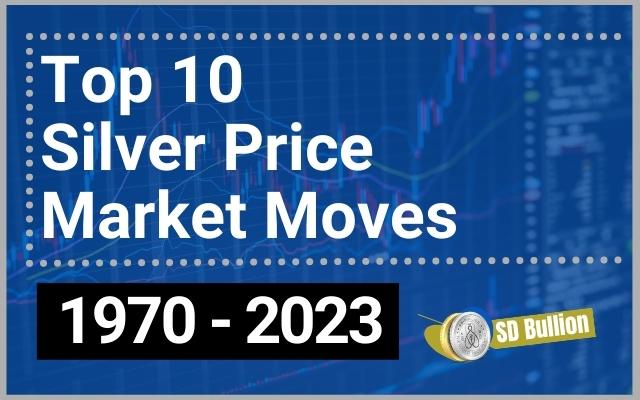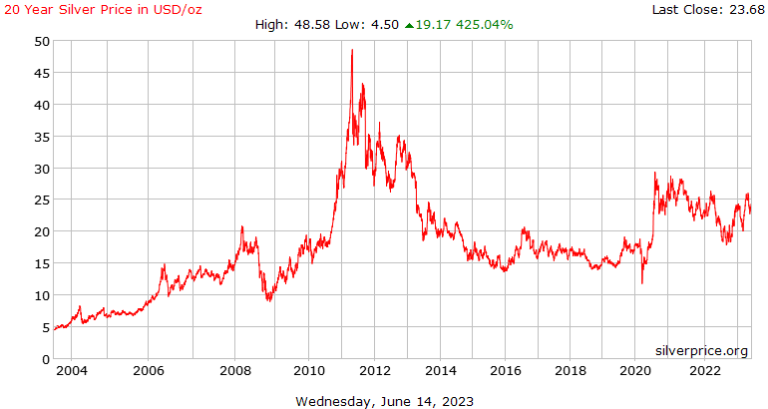Real-Time Silver Price Per Gram

Silver has long been treasured for its beauty and its value. Surging in popularity over the past few years, silver is a precious metal that has taken on an increasing importance in the world of finance.
As demand for silver grows, so too does the need to understand real-time silver price per gram. This article will analyze the factors that determine silver prices, examine historical trends in silver prices, explore spot pricing of silver, and consider investing opportunities with regard to this precious metal.
Through this exploration of real-time silver price per gram, readers will gain a better understanding of how to utilize this precious commodity for their financial benefit.
Overview of Silver Prices
This section provides a comprehensive overview of the current silver market.
Silver is one of the oldest known precious metals, having been used as currency as early as 700 B.C.E.
The modern silver market has seen considerable growth in recent years, with investors and governments alike buying large quantities of it for diversification and investing purposes.
Silver prices are highly dependent on supply and demand dynamics as well as the global economic environment.
The current spot price for silver per troy ounce (31 grams) is approximately $17 USD, representing a slight decrease from its all-time high in April 2011 when it reached an astonishing $49 USD per troy ounce.
Silver prices have experienced significant volatility over time due to various factors such as geopolitical tensions, economic uncertainties, natural disasters, and government policies.
A key factor influencing silver prices is industrial demand; this includes usage of silver in electronics production, jewelry making and photography film development.
As such, any changes or disruptions to these industries can cause major shifts in both short-term and long-term pricing trends for silver products worldwide.
Consequently, understanding the factors that influence the real-time price of silver per gram should be taken into account when considering investments involving this metal.
Factors Affecting Silver Prices
Fluctuations in the value of silver are unpredictable, akin to navigating a stormy sea. Numerous factors can influence the price of silver, such as economic growth and monetary policies.
For instance, when economic growth is strong, there is an increase in demand for silver that can raise its market prices. In addition, central banks’ decisions on monetary policy can have an effect on silver prices; if a large bank chooses to raise interest rates or implement quantitative easing programs, this may lead to higher demand for silver and thus an increase in its market price.
On the other hand, geopolitical events can also impact the value of silver. Any instability in a region could cause investors to move away from investing in commodities such as gold and silver and switch into safer investments like stocks or government-backed bonds instead. This could potentially lead to decreased demand for these metals which then results in lower market prices for them.
Finally, shifts in supply and demand within the physical markets (e.g., mine production levels) also play a role in influencing silver prices since they determine how much metal is available at any given time.
Historical Silver Prices
The value of silver has been historically volatile, with significant changes in its market price over time. The volatility of the price of silver has been attributed to various factors such as economic conditions, government policies and regulations, political events, public sentiment and technological advances.
Numerically speaking, silver prices have seen:
- A peak of $50 per ounce in January 1980;
- A decline to a low of $4 per ounce in February 1991;
- An increase to a high of $49 per ounce by April 2011; and
- Most recently, a decrease back down to levels around $17 per ounce at the end of 2019.
These fluctuations are further evidenced when analyzing the annual average price for silver since 1971 – which ranges from a low of $7.04/oz in 2001 to a high of $35/oz in 2011 – providing evidence that the market for silver can be highly unpredictable yet potentially lucrative if investors take advantage of short-term opportunities or long-term trends within the commodities markets.
Spot Price of Silver
Spot prices of silver provide a snapshot of the current market value and can provide insight into the direction in which it may move.
Silver spot prices are determined by a variety of factors such as global currency values, consumer demand for silver products, production costs, and the availability of substitutes.
Spot prices are also used to calculate premiums for physical silver products such as coins or bars. The premium is based on how rare an item is, its condition, its age, and how many people desire it.
Demand plays a major role in determining spot prices since higher levels of demand will usually increase the price whereas lower levels of demand will cause a decrease in price.
Silver spot prices can be tracked through various financial websites that offer real-time data updates on precious metals markets around the world.
By monitoring these fluctuations over time investors have been able to identify potential buying opportunities when the market reaches certain points at which they anticipate future gains.
However, this type of investing requires careful research and analysis to understand all contributing factors that influence silver spot prices before making an investment decision.
Investing in Silver
Tracking silver spot prices can provide investors with insight into potential buying opportunities, enabling them to capitalize on the ebb and flow of the market like a surfer riding a wave.
Investing in silver is considered a speculative venture as its value is subject to numerous external factors such as global financial markets, geopolitical events, currency fluctuations, and technological developments. Silver prices are highly volatile compared to other precious metals, making it an attractive option for short-term traders looking to capitalize on quick price movements.
In terms of long-term investment strategies, investors should consider that silver could act as a hedge against inflation or currency devaluation due to its intrinsic value. Despite its volatile nature, investing in silver has been shown to be profitable over time due to its high demand among industries such as electronics manufacturing and medical instrumentation.
In addition, many investors view silver not only as an asset but also as an inflationary hedge against paper money given its limited supply and finite nature.
Frequently Asked Questions
What is the best way to store silver?
Storing silver requires a careful approach, as the metal is prone to tarnishing and other damage.
Silver should be stored in a cool, dry place away from direct sunlight or sources of heat and moisture.
It is important to separate different types of silver items, such as coins and jewelry, when storing them together.
Silver should also be kept away from items made of other metals due to potential corrosion.
To ensure the most protection for silver items, they can be sealed in airtight plastic bags with anti-tarnish strips or stored in special containers lined with tarnish-resistant cloths.
What is the difference between silver and silver bullion?
Silver and silver bullion are both forms of the valuable commodity, but there are significant differences between them.
Silver bullion is a form of investment that comes in the form of coins or bars. A typical example would be buying 1-ounce 999 fine silver coins like the American Eagle from the US Mint. Silver bullion typically has a higher resale value than other types of items made out of or containing silver, such as jewelry, flatware, cutlery, and other decorative items.
This is because silver bullion is standardized and easy to evaluate its worth according to weight and purity. When buying silver bullion for investment purposes, investors usually pay less than spot price due to premiums associated with fabrication and distribution costs.
Are there any fees associated with investing in silver?
Investing in silver can lead to potentially lucrative rewards, but there are associated fees that should be taken into consideration.
These fees typically include brokerage charges for buying and selling silver, storage costs if the investor is not storing their silver themselves, taxes on capital gains and income from the sale of silver investments, and any commissions or other fees imposed by the broker.
It is important to research brokers carefully before investing in order to ensure a smooth transaction with minimal loss due to any unexpected fees.
What is the most profitable way to invest in silver?
Investing in silver can be a profitable venture, but the most profitable way to do so must take into account various factors such as market trends, volatility, liquidity, and cost.
Typically, investors will find that buying physical silver bullion or coins is one of the most advantageous approaches as it allows them to benefit from long-term capital gains when prices rise and offers tangible security against market downturns.
Additionally, silver Exchange Traded Funds (ETFs) are another popular choice due to their convenience and ease of trading at relatively low fees.
Ultimately, investors must assess their goals and risk tolerance before deciding which type of investment will best suit their needs.
How often do silver prices fluctuate?
Silver prices typically fluctuate multiple times a day in response to varying market conditions. The rate of fluctuation depends on the overall supply and demand within the silver market, which is affected by a range of factors including political and economic events, currency movements, and changes in investor sentiment.
Changes in the price of silver can also be affected by other commodities markets such as gold or oil, as well as seasonal variations. Consequently, it is important for investors to monitor silver prices regularly when making investment decisions.
Conclusion
The silver market is highly volatile with prices often fluctuating in response to economic and political changes. The spot price of silver is an important measure for investors, providing valuable real-time information on the current status of the market.
With a deep understanding of how the factors that influence silver prices can affect one’s investment decisions, investors are able to make informed choices when it comes to purchasing or selling silver. As such, knowledge of current and historical trends can be a powerful tool for maximizing profits while minimizing losses.
By taking advantage of the ever-changing dynamics of this precious metal’s value, investors can create an effective portfolio that may stand the test of time.






